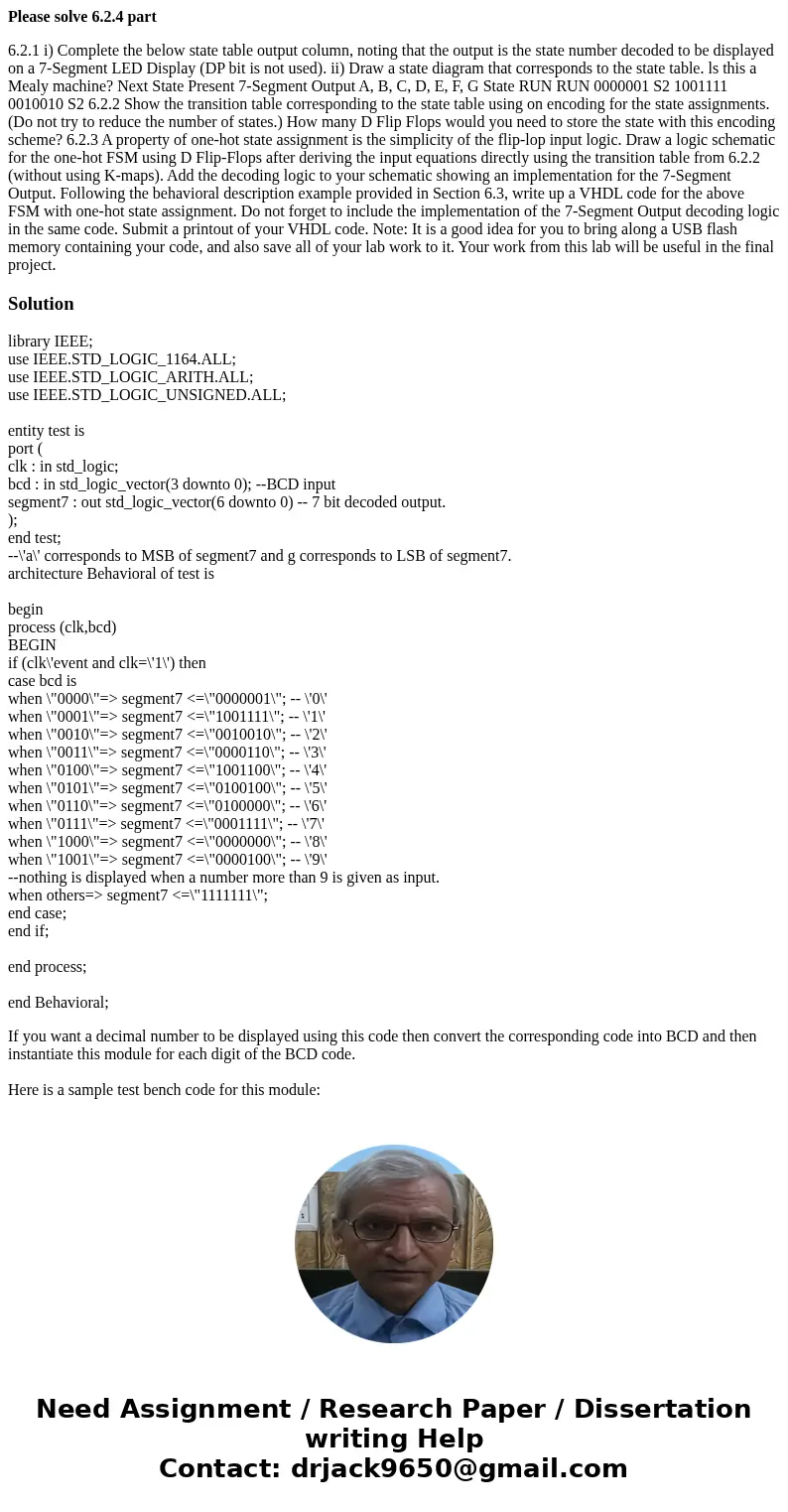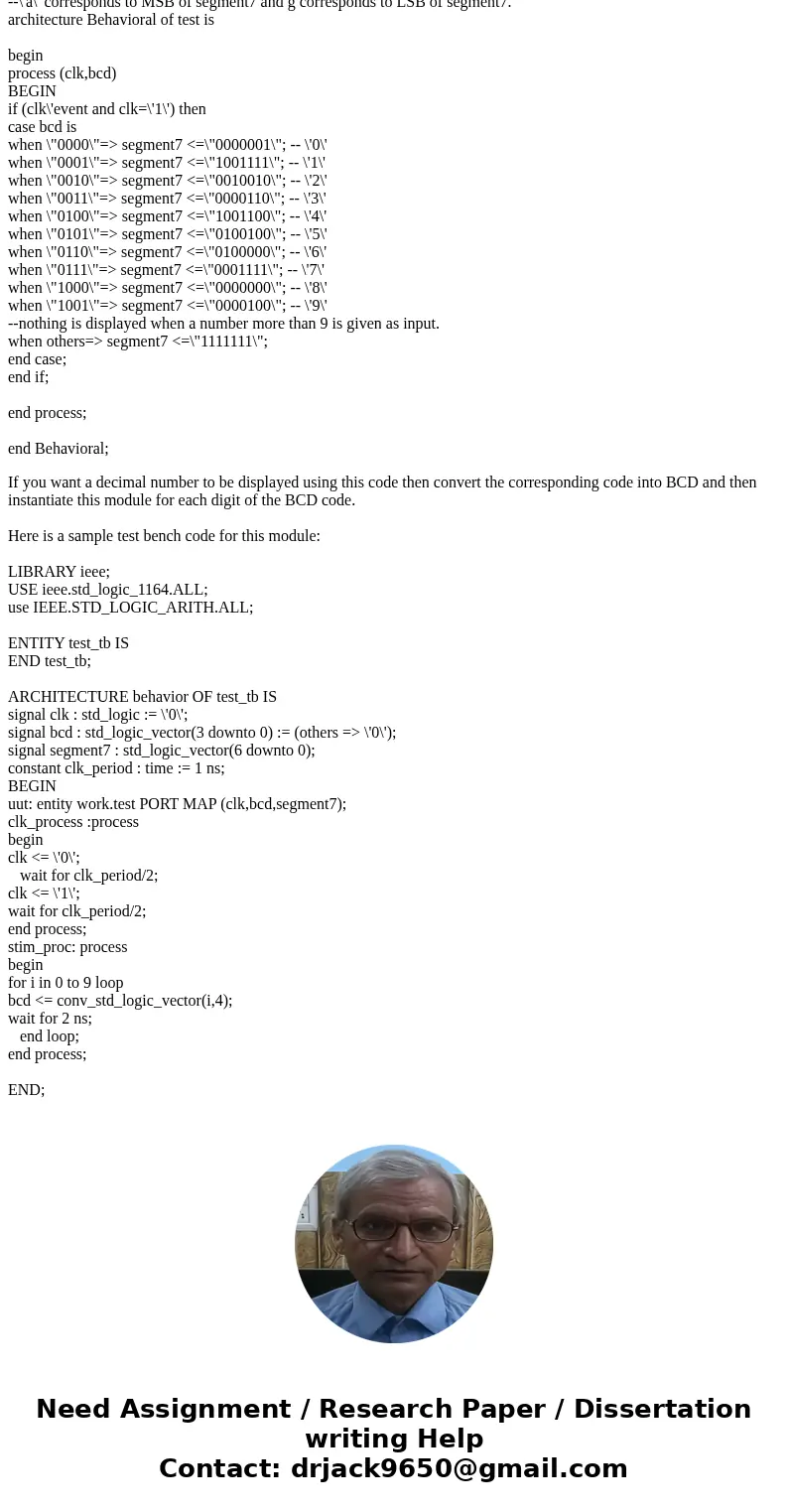Please solve 624 part 621 i Complete the below state table o
Please solve 6.2.4 part
6.2.1 i) Complete the below state table output column, noting that the output is the state number decoded to be displayed on a 7-Segment LED Display (DP bit is not used). ii) Draw a state diagram that corresponds to the state table. ls this a Mealy machine? Next State Present 7-Segment Output A, B, C, D, E, F, G State RUN RUN 0000001 S2 1001111 0010010 S2 6.2.2 Show the transition table corresponding to the state table using on encoding for the state assignments. (Do not try to reduce the number of states.) How many D Flip Flops would you need to store the state with this encoding scheme? 6.2.3 A property of one-hot state assignment is the simplicity of the flip-lop input logic. Draw a logic schematic for the one-hot FSM using D Flip-Flops after deriving the input equations directly using the transition table from 6.2.2 (without using K-maps). Add the decoding logic to your schematic showing an implementation for the 7-Segment Output. Following the behavioral description example provided in Section 6.3, write up a VHDL code for the above FSM with one-hot state assignment. Do not forget to include the implementation of the 7-Segment Output decoding logic in the same code. Submit a printout of your VHDL code. Note: It is a good idea for you to bring along a USB flash memory containing your code, and also save all of your lab work to it. Your work from this lab will be useful in the final project.Solution
library IEEE;
use IEEE.STD_LOGIC_1164.ALL;
use IEEE.STD_LOGIC_ARITH.ALL;
use IEEE.STD_LOGIC_UNSIGNED.ALL;
entity test is
port (
clk : in std_logic;
bcd : in std_logic_vector(3 downto 0); --BCD input
segment7 : out std_logic_vector(6 downto 0) -- 7 bit decoded output.
);
end test;
--\'a\' corresponds to MSB of segment7 and g corresponds to LSB of segment7.
architecture Behavioral of test is
begin
process (clk,bcd)
BEGIN
if (clk\'event and clk=\'1\') then
case bcd is
when \"0000\"=> segment7 <=\"0000001\"; -- \'0\'
when \"0001\"=> segment7 <=\"1001111\"; -- \'1\'
when \"0010\"=> segment7 <=\"0010010\"; -- \'2\'
when \"0011\"=> segment7 <=\"0000110\"; -- \'3\'
when \"0100\"=> segment7 <=\"1001100\"; -- \'4\'
when \"0101\"=> segment7 <=\"0100100\"; -- \'5\'
when \"0110\"=> segment7 <=\"0100000\"; -- \'6\'
when \"0111\"=> segment7 <=\"0001111\"; -- \'7\'
when \"1000\"=> segment7 <=\"0000000\"; -- \'8\'
when \"1001\"=> segment7 <=\"0000100\"; -- \'9\'
--nothing is displayed when a number more than 9 is given as input.
when others=> segment7 <=\"1111111\";
end case;
end if;
end process;
end Behavioral;
If you want a decimal number to be displayed using this code then convert the corresponding code into BCD and then instantiate this module for each digit of the BCD code.
Here is a sample test bench code for this module:
LIBRARY ieee;
USE ieee.std_logic_1164.ALL;
use IEEE.STD_LOGIC_ARITH.ALL;
ENTITY test_tb IS
END test_tb;
ARCHITECTURE behavior OF test_tb IS
signal clk : std_logic := \'0\';
signal bcd : std_logic_vector(3 downto 0) := (others => \'0\');
signal segment7 : std_logic_vector(6 downto 0);
constant clk_period : time := 1 ns;
BEGIN
uut: entity work.test PORT MAP (clk,bcd,segment7);
clk_process :process
begin
clk <= \'0\';
wait for clk_period/2;
clk <= \'1\';
wait for clk_period/2;
end process;
stim_proc: process
begin
for i in 0 to 9 loop
bcd <= conv_std_logic_vector(i,4);
wait for 2 ns;
end loop;
end process;
END;


 Homework Sourse
Homework Sourse